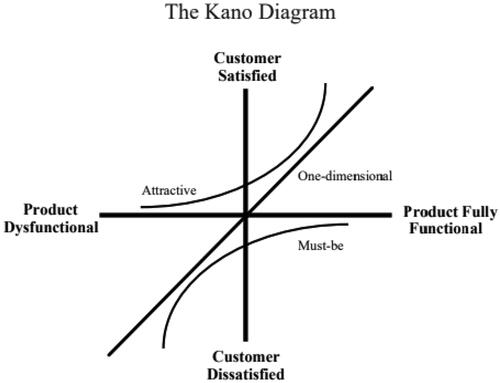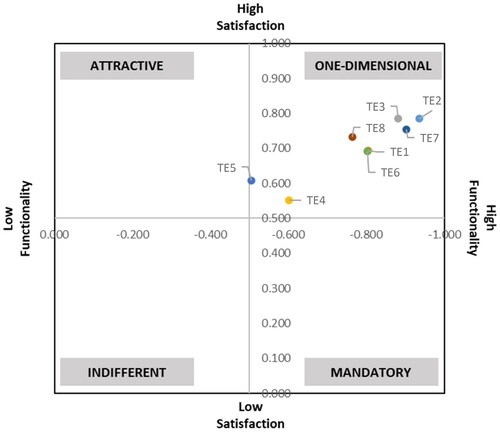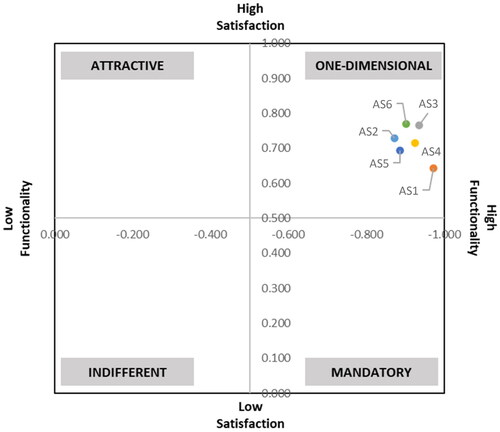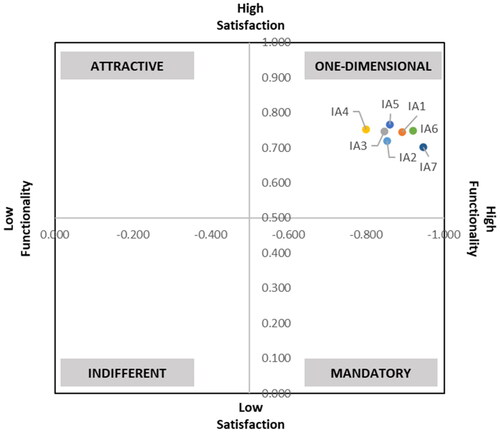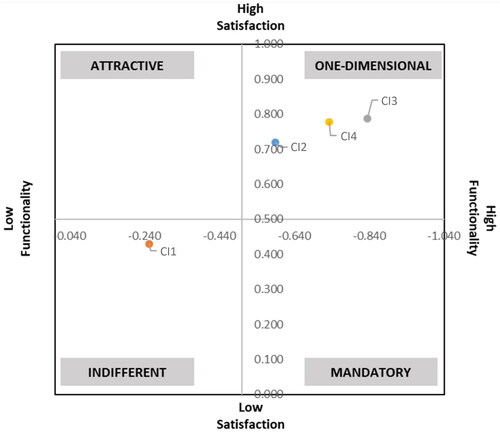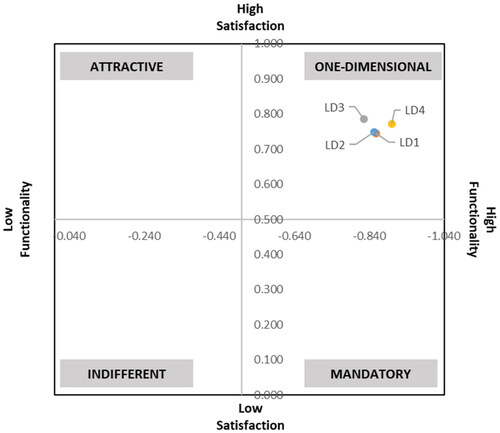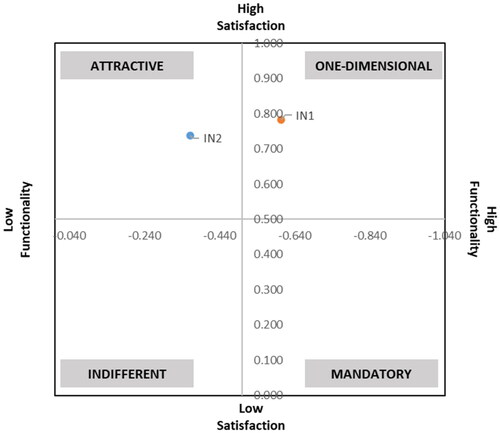Figures & data
Figure 1. Method of classifying quality attributes in the Kano model. Source: adapted from Witell and Löfgren (Citation2007) and Madzík and Pelantová (Citation2018).
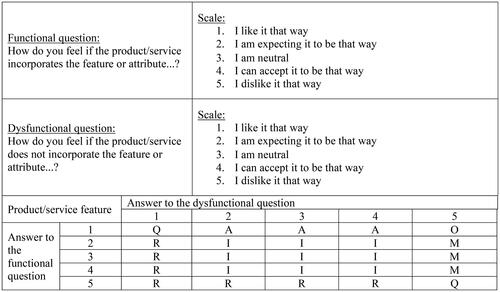
Table 1. Examples of functional and dysfunctional items by dimension
Table 2. Calculation of satisfaction and dissatisfaction levels using the Kano model
Table 3. Demographic data
Table 4. Results for the teaching dimension
Table 5. Results for the administrative services dimension
Table 6. Results for the academic facilities dimension
Table 7. Results for the continuous improvement dimension
Table 8. Results for the leadership dimension
Table 9. Results for the internationalisation dimension

